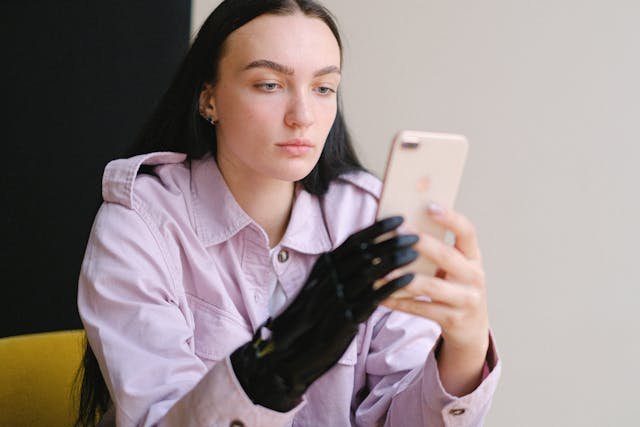Fitting a prosthetic after a wrist disarticulation amputation can be a complex process. Because the hand is lost at the level of the wrist joint, the prosthetic needs to be carefully designed to fit the unique shape and length of the remaining limb. This process is more detailed than many people expect and can come with specific challenges related to comfort, control, and appearance.
At Robobionics, we work with people across India who are going through this journey. Over the years, we have seen which problems come up the most during the prosthetic fitting process and, more importantly, what can be done to solve them. A good prosthetic should not only restore function—it should feel natural, secure, and comfortable enough to wear all day.
In this article, we’ll walk through the most common issues people face with wrist disarticulation prosthetics and offer practical solutions that make real improvements. Whether you are exploring your first prosthetic or seeking better results with a current one, this guide will help you understand what to expect and how to overcome common fitting problems.
Socket Fit: Managing Limb Shape and Volume
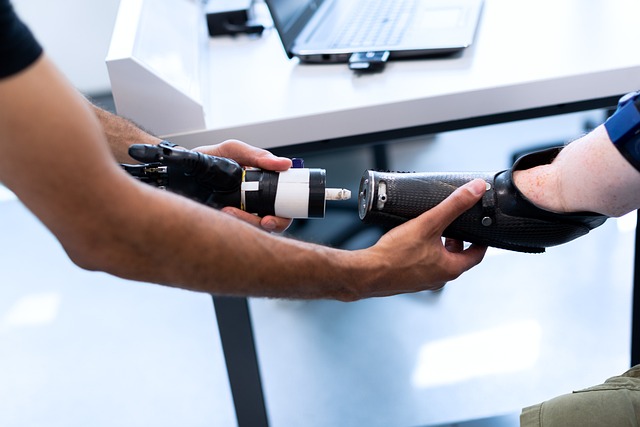
Socket fit is the foundation of any successful prosthetic. For wrist disarticulation, this can be more complicated than in other levels of limb loss. The shape of the residual limb is usually bulbous at the end, due to the remaining wrist bones. This shape can make it hard to get a snug fit without causing discomfort or pressure.
A socket that’s too tight can lead to pain, skin irritation, and even swelling. On the other hand, a socket that’s too loose may not stay in place or allow for proper control of the prosthetic hand. Achieving the right balance requires careful measurements and sometimes several fittings. This is not a one-size-fits-all process, and even a few millimeters of adjustment can make a big difference.
The solution often comes through a combination of digital limb scanning and flexible socket design. At Robobionics, we use advanced tools to measure the shape of the limb precisely and create a socket that molds smoothly around the residual bones. We also work with liners and suspension systems that can be adjusted over time as the limb changes shape. Regular check-ins help ensure the socket stays comfortable as your body adapts.
Suspension and Security: Keeping the Prosthetic in Place
One of the biggest concerns users have is whether their prosthetic will stay securely attached during daily use. For wrist disarticulation amputees, this challenge is unique because there is no forearm length to anchor the prosthetic deeply. That means extra care must be taken in designing how the prosthetic stays on the limb.
Without proper suspension, the prosthetic can shift, twist, or even fall off during activity. This not only affects confidence but also makes it harder to learn how to use the hand properly. If a prosthetic moves even slightly out of position, it can throw off the alignment and cause pressure on sensitive areas of the limb.
To solve this, a well-fitted suction socket or vacuum suspension system is often the best choice. These systems create a seal between the socket and the limb, holding the prosthetic in place without needing heavy straps. This makes the prosthetic feel lighter and more responsive. Some users also benefit from liners with locking pins or sleeve suspensions, which offer extra grip and comfort. We work closely with each individual to decide what method works best based on their activity level and daily routine.
Prosthetic Length and Appearance Matching
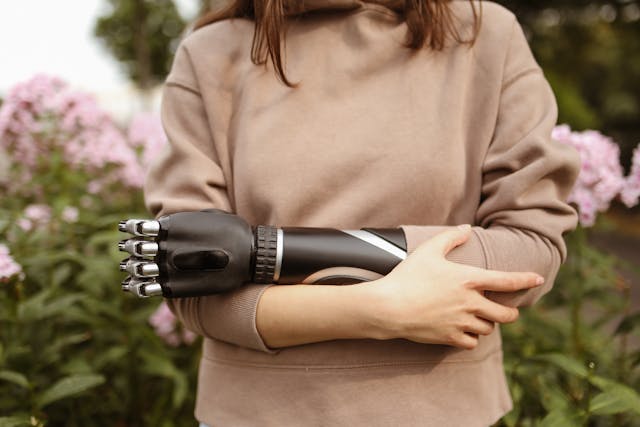
Because the wrist disarticulation level preserves more limb length than a traditional trans-radial amputation, it creates a special design challenge: matching the length of the prosthetic hand to the natural side. If not done correctly, one arm may look longer or shorter than the other, leading to both visual and functional issues.
The problem gets more noticeable when the user wears short sleeves or uses both arms together for tasks. Even a small mismatch in length can affect balance, coordination, and the way clothing fits. Users may feel self-conscious or frustrated if their prosthetic hand doesn’t match the natural one in size or alignment.
This issue can be fixed with precise limb measurements and careful wrist joint placement. Our team at Robobionics ensures that the prosthetic wrist unit and hand are aligned in a way that keeps both arms the same length when standing or sitting. We also offer cosmetic covers and skin-toned finishes that help the prosthetic blend in more naturally. This attention to detail helps users feel more confident in how they look and function with their prosthetic.
Limited Range of Motion and Wrist Rotation
Another challenge for wrist disarticulation prosthetic users is regaining wrist movement. Since the wrist joint is no longer present, users lose natural rotation and flexion. Many prosthetic hands are fixed in position, making it harder to perform daily tasks like turning a key, opening a bottle, or holding items at different angles.
A static hand position limits versatility and can force users to rely more on their shoulder or elbow for movements that should happen at the wrist. This creates fatigue and can lead to long-term strain in other parts of the body.
To address this, modern prosthetics now include mechanical or powered wrist units that offer rotation and flexion features. These allow users to adjust the angle of their hand manually or electronically based on the task. At Robobionics, we offer multi-position wrist joints that are lightweight and easy to control. This added flexibility gives users better range and comfort throughout the day, making their prosthetic more useful in real-life situations.
Skin Irritation and Socket Pressure Points
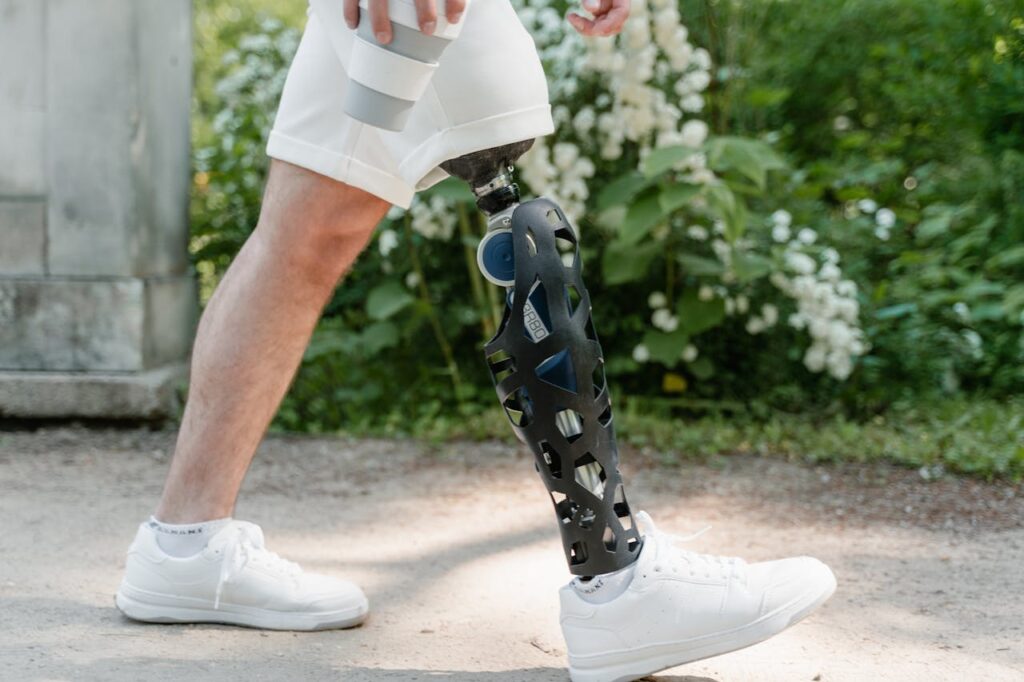
Wearing a prosthetic for hours each day can lead to skin discomfort, especially around the edges of the socket or areas where pressure builds up. For wrist disarticulation users, this often happens around the bony end of the residual limb or at the seal point of the suspension system.
Skin irritation can start as mild redness but may turn into blisters, rashes, or even open wounds if not managed properly. Once the skin is damaged, the user may need to stop wearing the prosthetic for several days, which interrupts training and daily function.
The best way to prevent this is through a well-contoured socket and breathable liners that reduce friction. We also pay close attention to how weight is distributed in the socket to avoid pressure points. When needed, custom padding and softer inner materials are used. Users are also guided on how to clean their limb and prosthetic daily to keep the skin healthy and prevent sweat buildup. These small steps make a big difference in overall comfort and skin health.
Delayed Muscle Response and Signal Detection in Myoelectric Use
For users who choose myoelectric prosthetic hands, another challenge is muscle signal detection. The sensors in a myoelectric hand rely on muscle contractions to control movement, but sometimes the signals are too weak or inconsistent—especially if the user has not yet trained their limb fully.
Delayed response or false activation can make it hard to open or close the hand correctly. Users may become frustrated if the prosthetic doesn’t react in time or responds incorrectly. This can reduce confidence and slow down the learning process.
To solve this, we guide users through muscle training programs that strengthen and isolate the necessary muscles. Our Grippy™ hand, for example, uses high-sensitivity sensors and smart software that learns from the user’s signal pattern over time. With regular practice, most users see major improvements in control and speed. The key is patience, consistent training, and proper alignment of the sensors during fitting.
Psychological Adjustment and User Confidence

One of the most important, yet often overlooked, challenges in prosthetic fitting is emotional adaptation. After a wrist disarticulation, users may struggle with body image, anxiety, or fear of judgment. The process of learning to use a prosthetic, especially one with advanced technology, can also feel overwhelming at first.
Some users hesitate to wear their prosthetic in public or feel unsure about how others will react. This emotional stress can delay their adaptation and lower their motivation to use the device consistently. Overcoming this challenge is just as important as addressing the technical ones.
At Robobionics, we focus on creating a supportive environment from day one. We offer guided training, peer support, and regular check-ins to help users feel seen and heard. We also design our prosthetics with aesthetics in mind, allowing for cosmetic customization that helps users feel confident about their appearance. When users feel good about how they look and move, their mindset improves, and so does their overall outcome with the prosthetic.
Heat Build-Up and Excess Sweating During Use
Wrist disarticulation users often report increased sweating inside the socket, especially in warm climates or during extended use. Since the socket covers the end of the limb tightly to provide suction or support, airflow is restricted. This creates a warm, enclosed space that leads to moisture buildup, which can cause discomfort and lead to skin irritation over time.
Sweating also makes the prosthetic more likely to shift, especially if the suspension system relies on a tight seal. As the skin becomes slippery, the prosthetic may lose grip or alignment, affecting both stability and control. In severe cases, users may need to remove the prosthetic several times a day just to dry the limb, disrupting their workflow and confidence.
To manage this, we recommend using breathable liners made from moisture-wicking materials. These liners draw sweat away from the skin and reduce heat build-up. For some users, adding small ventilation ports in non-load-bearing areas of the socket also helps improve air circulation. At Robobionics, we tailor these adjustments during the fitting stage to ensure that each socket stays cool and comfortable—even in India’s hot climate.
Alignment Issues with Elbow and Shoulder Movement
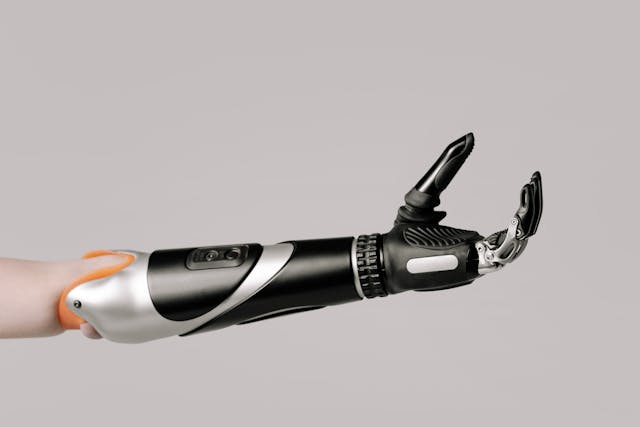
Because the wrist is a critical point for hand alignment, losing it can throw off the balance of the entire upper limb. If the prosthetic hand is positioned even slightly off-angle during fitting, it can result in poor coordination with the elbow and shoulder. This misalignment may not be noticeable right away, but over time, it creates discomfort and reduces function.
Users may find themselves adjusting their arm posture constantly or overusing the opposite limb to compensate. This leads to fatigue and potential strain in the upper back or neck. It also limits the prosthetic’s usefulness, as natural arm swing and reach become disrupted.
Solving this problem starts with getting the alignment right from day one. We take full-arm measurements—not just of the residual limb, but also of shoulder posture, elbow bend, and natural hand resting position. During fitting, we simulate various daily movements to test alignment in real-life scenarios, like reaching, lifting, and turning. This whole-arm approach ensures that the prosthetic supports—not disrupts—natural movement.
Difficulty with Fine Motor Skills and Grip Transitions
Wrist disarticulation prosthetic users often want to regain the ability to do small, delicate tasks—things like writing, typing, holding a fork, or using a zipper. While many prosthetic hands can open and close, not all offer the precision needed for these tasks, especially without wrist flexion or rotation.
The challenge isn’t just about strength—it’s about coordination. Without a natural wrist, tasks that require angle adjustment or finger precision become more difficult. Some users end up using their non-dominant hand more often or avoiding certain activities altogether.
To support fine motor skills, we recommend prosthetics with multi-grip capabilities. Devices like our Grippy™ hand can switch between grip patterns—such as pinch, tripod, or lateral grips—based on the task. Training is also essential. We guide users through targeted activities during rehabilitation to build control, accuracy, and coordination using their new hand. Over time, they gain the muscle memory needed to use their prosthetic with more precision and confidence.
Limited Access to Skilled Prosthetic Care in Remote Areas

Many users in India, especially in rural or semi-urban areas, struggle to access follow-up prosthetic care after their initial fitting. This creates challenges when adjustments are needed due to volume changes, socket wear, or mechanical issues. A well-fitted prosthetic today may not stay that way for long if there’s no professional nearby to make necessary corrections.
Users may delay seeking help, tolerate discomfort, or stop using the prosthetic altogether, believing nothing more can be done. In such cases, the device loses its usefulness not because of design failure—but due to a lack of ongoing support.
To solve this, Robobionics partners with clinics across the country and offers telehealth consultations, where our experts can guide users and local providers through remote adjustments. For users who need more hands-on help, we schedule periodic camps and outreach events to bring expert care closer to home. This commitment ensures that prosthetic users—regardless of location—get the consistent support they need.
Challenges in Adapting to Bimanual Activities
Many everyday tasks—like tying shoelaces, opening jars, buttoning a shirt, or cooking—require both hands working together. For someone with a wrist disarticulation, adapting to these two-handed tasks can be one of the most difficult parts of recovery, especially when one hand is a prosthetic.
The challenge isn’t just in gripping—it’s in timing, coordination, and pressure control. New users may feel awkward, slow, or frustrated during tasks that used to be automatic. The learning curve can feel steep, and this sometimes causes users to avoid using the prosthetic altogether in more complex tasks.
Our solution is guided bimanual training during the rehabilitation process. We simulate everyday scenarios in the clinic and provide home-based tasks that gradually build coordination between the natural and prosthetic hand. The more these tasks are practiced, the smoother they become. With patience and encouragement, users regain the ability to move confidently through daily life using both hands.
Conclusion
Fitting a prosthetic after wrist disarticulation is never a simple process, but it doesn’t have to be a struggle. With the right approach, challenges related to socket fit, suspension, skin comfort, and function can all be solved. Every issue has a solution—often through a mix of good design, careful training, and ongoing support.
At Robobionics, we take a personalized approach to every prosthetic fitting. We understand that every user is different, and we tailor our solutions to fit your body, your goals, and your life. Whether you’re just starting out or looking to improve your current prosthetic experience, our team is here to help.
If you’re facing challenges with your wrist disarticulation prosthetic or want to learn more about how we can help you get the perfect fit, contact us today. We’ll walk this journey with you—step by step, hand in hand.



